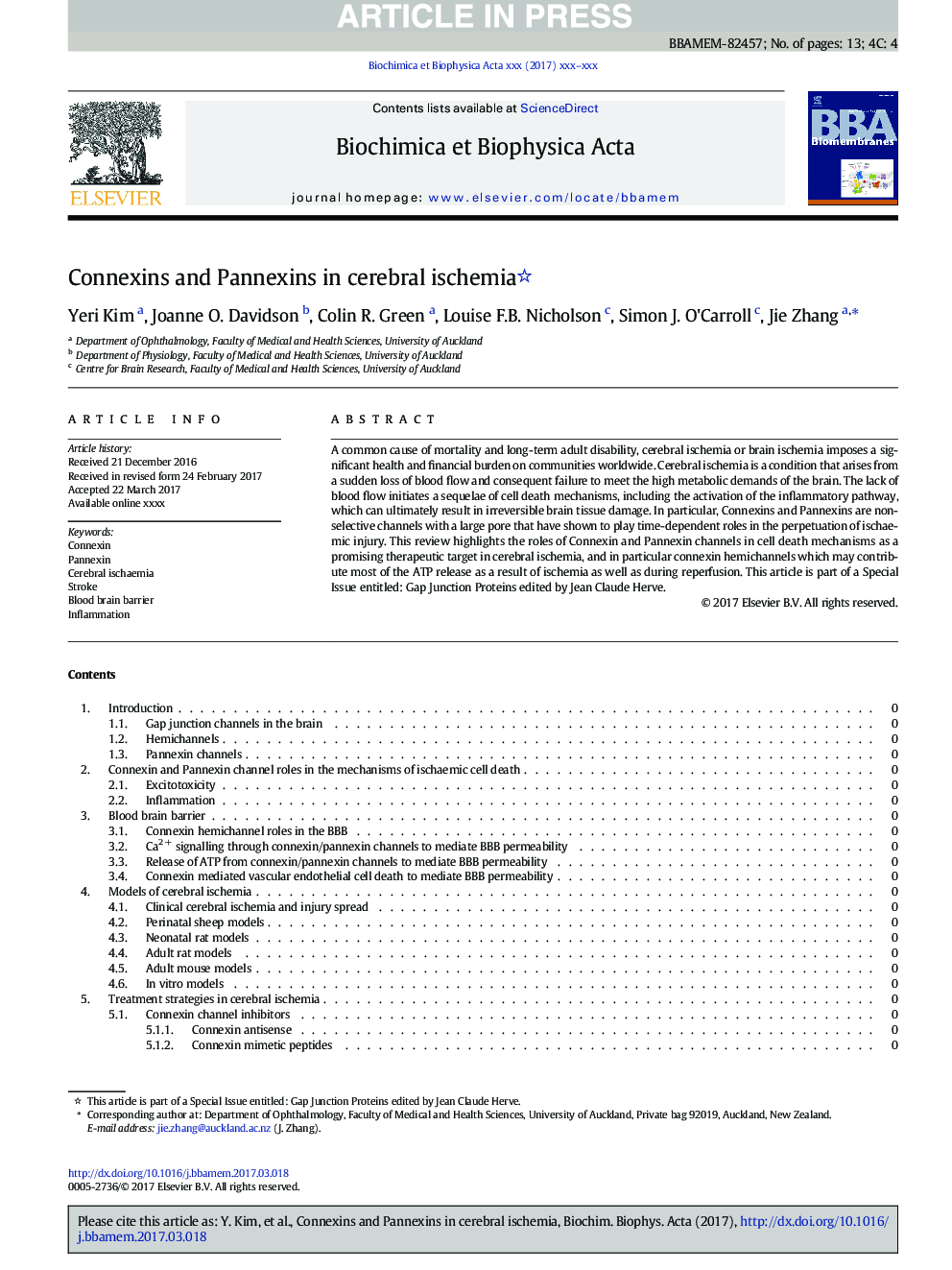| Article ID | Journal | Published Year | Pages | File Type |
|---|---|---|---|---|
| 8299842 | Biochimica et Biophysica Acta (BBA) - Biomembranes | 2018 | 13 Pages |
Abstract
A common cause of mortality and long-term adult disability, cerebral ischemia or brain ischemia imposes a significant health and financial burden on communities worldwide. Cerebral ischemia is a condition that arises from a sudden loss of blood flow and consequent failure to meet the high metabolic demands of the brain. The lack of blood flow initiates a sequelae of cell death mechanisms, including the activation of the inflammatory pathway, which can ultimately result in irreversible brain tissue damage. In particular, Connexins and Pannexins are non-selective channels with a large pore that have shown to play time-dependent roles in the perpetuation of ischaemic injury. This review highlights the roles of Connexin and Pannexin channels in cell death mechanisms as a promising therapeutic target in cerebral ischemia, and in particular connexin hemichannels which may contribute most of the ATP release as a result of ischemia as well as during reperfusion. This article is part of a Special Issue entitled: Gap Junction Proteins edited by Jean Claude Herve.
Related Topics
Life Sciences
Biochemistry, Genetics and Molecular Biology
Biochemistry
Authors
Yeri Kim, Joanne O. Davidson, Colin R. Green, Louise F.B. Nicholson, Simon J. O'Carroll, Jie Zhang,
